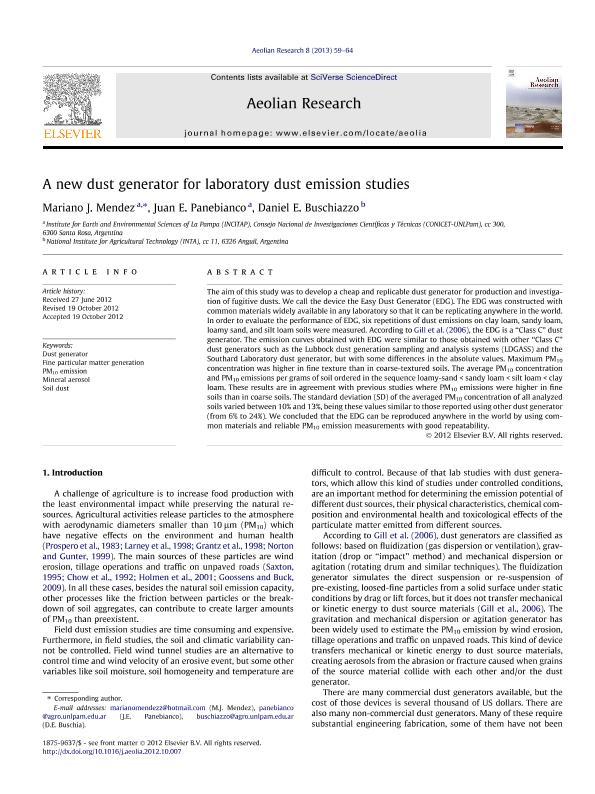Artículo
A new dust generator for laboratory dust emission studies
Fecha de publicación:
03/2013
Editorial:
Elsevier Science
Revista:
Aeolian Research
ISSN:
1875-9637
Idioma:
Inglés
Tipo de recurso:
Artículo publicado
Clasificación temática:
Resumen
The aim of this study was to develop a cheap and replicable dust generator for production and investigation of fugitive dusts. We call the device the Easy Dust Generator (EDG). The EDG was constructed with common materials widely available in any laboratory so that it can be replicating anywhere in the world. In order to evaluate the performance of EDG, six repetitions of dust emissions on clay loam, sandy loam, loamy sand, and silt loam soils were measured. According to Gill et al. (2006), the EDG is a “Class C” dust generator. The emission curves obtained with EDG were similar to those obtained with other “Class C” dust generators such as the Lubbock dust generation sampling and analysis systems (LDGASS) and the Southard Laboratory dust generator, but with some differences in the absolute values. Maximum PM10 concentration was higher in fine texture than in coarse-textured soils. The average PM10 concentration and PM10 emissions per grams of soil ordered in the sequence loamy-sand < sandy loam < silt loam < clay loam. These results are in agreement with previous studies where PM10 emissions were higher in fine soils than in coarse soils. The standard deviation (SD) of the averaged PM10 concentration of all analyzed soils varied between 10% and 13%, being these values similar to those reported using other dust generator (from 6% to 24%). We concluded that the EDG can be reproduced anywhere in the world by using common materials and reliable PM10 emission measurements with good repeatability.
Archivos asociados
Licencia
Identificadores
Colecciones
Articulos(INCITAP)
Articulos de INST.D/CS D/L/TIERRA Y AMBIENTALES D/L/PAMPA
Articulos de INST.D/CS D/L/TIERRA Y AMBIENTALES D/L/PAMPA
Citación
Mendez, Mariano Javier; Panebianco, Juan Esteban; Buschiazzo, Daniel Eduardo; A new dust generator for laboratory dust emission studies; Elsevier Science; Aeolian Research; 8; 3-2013; 59-64
Compartir
Altmétricas




